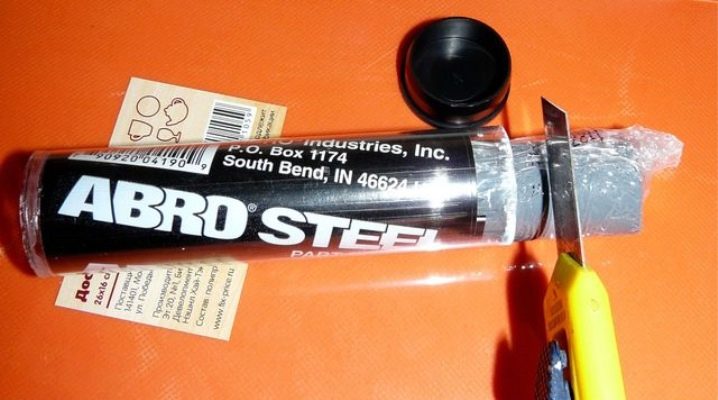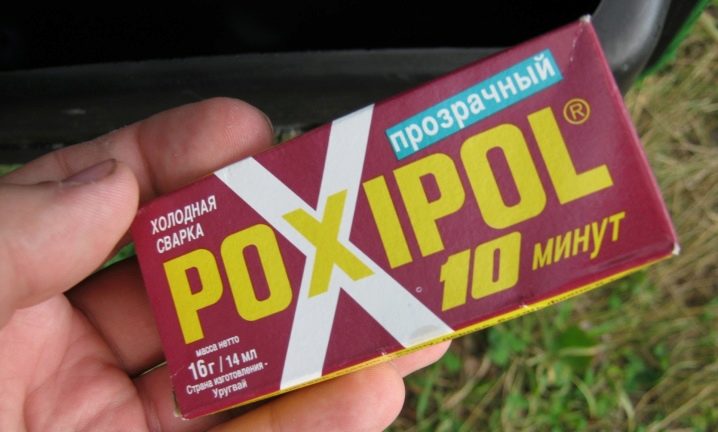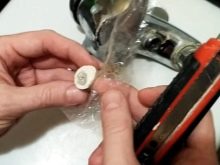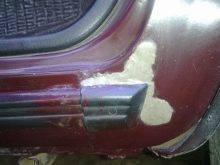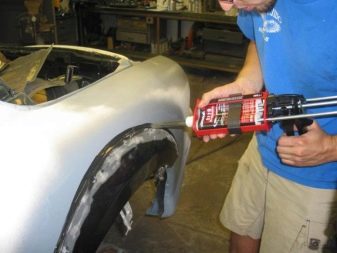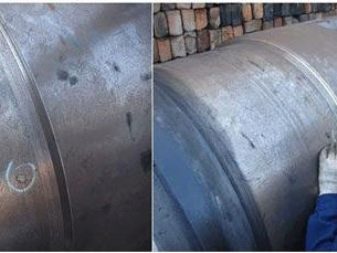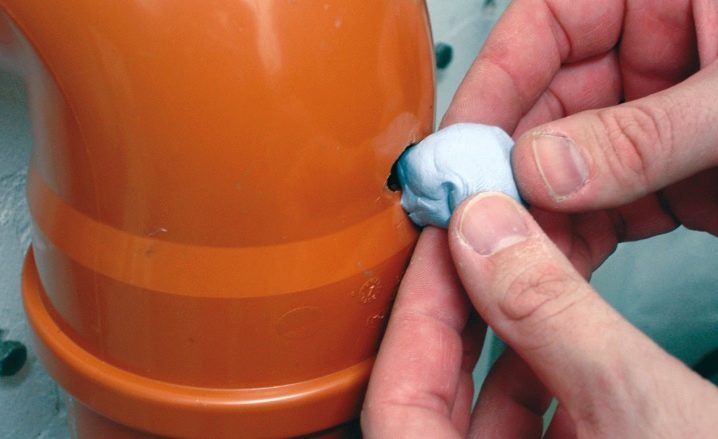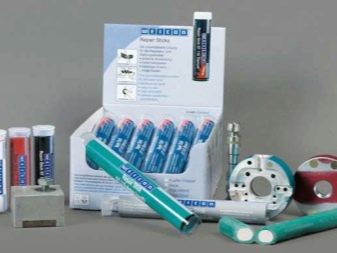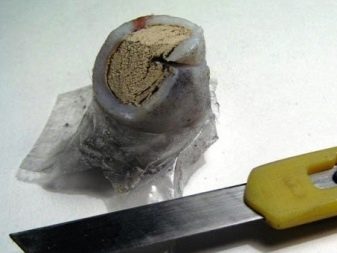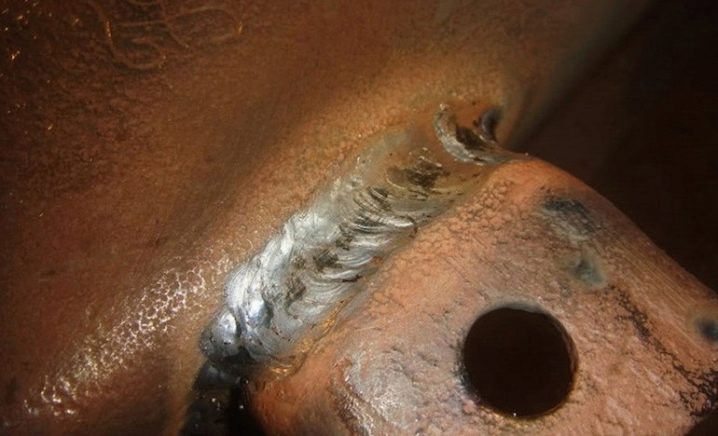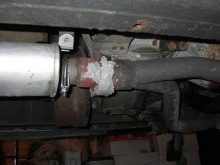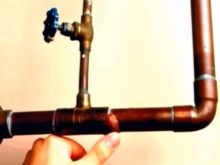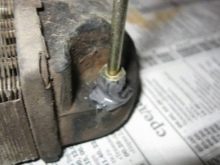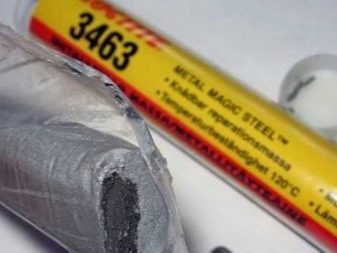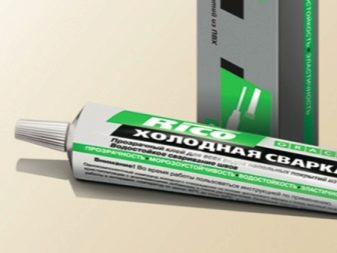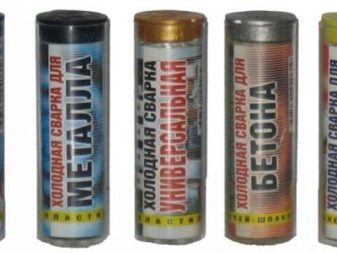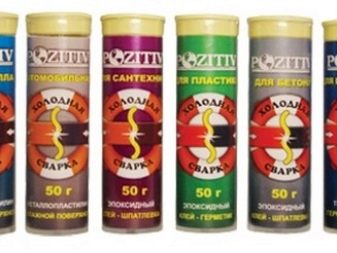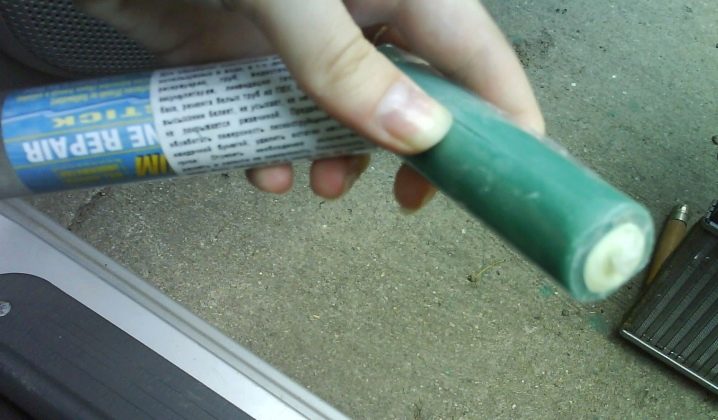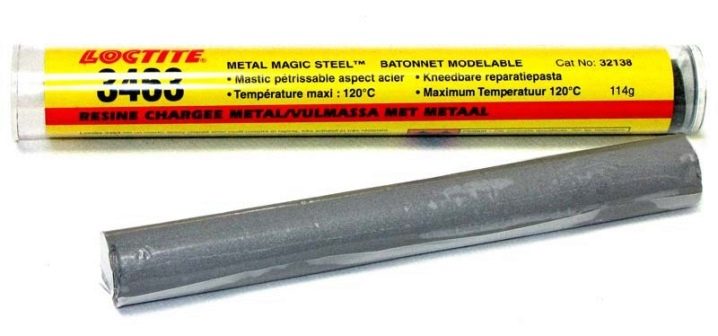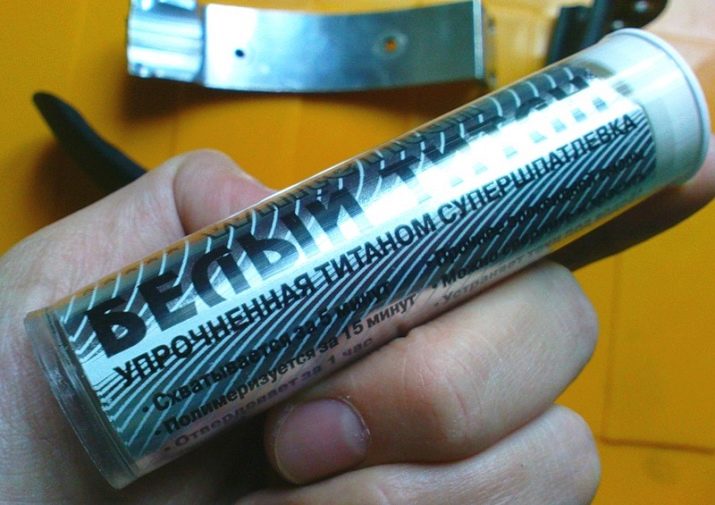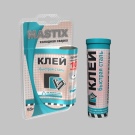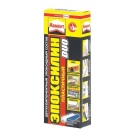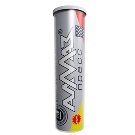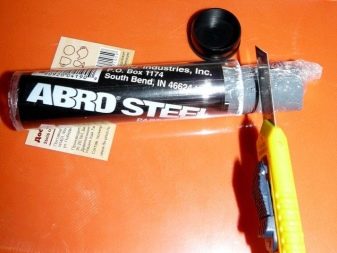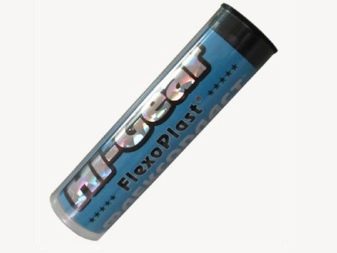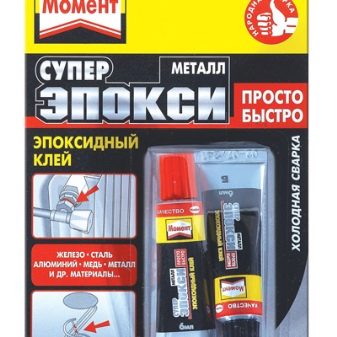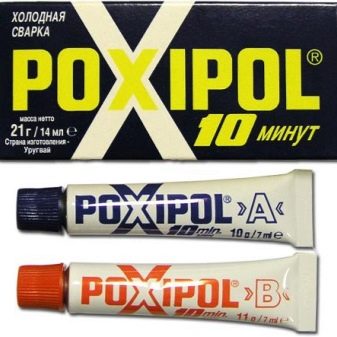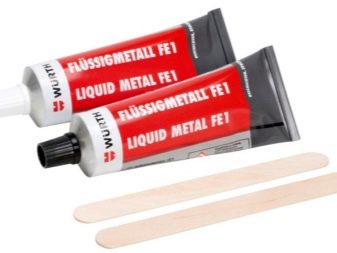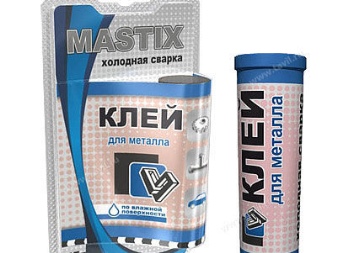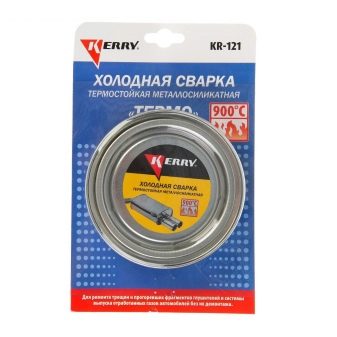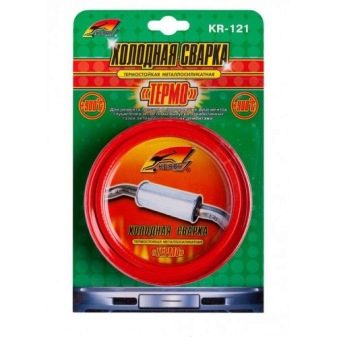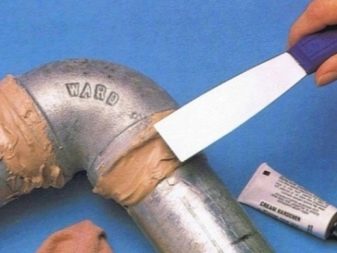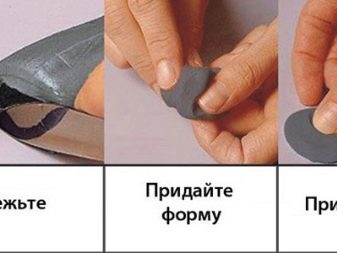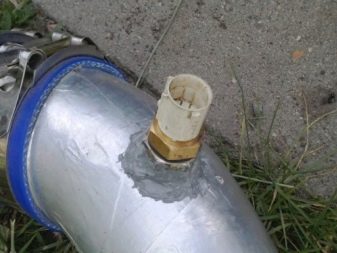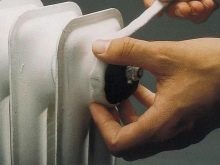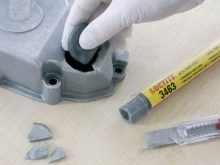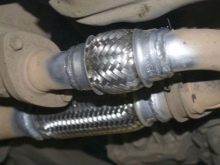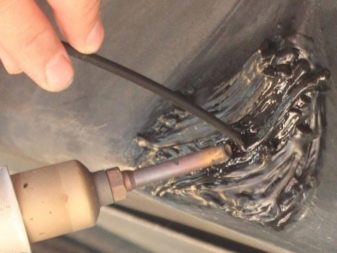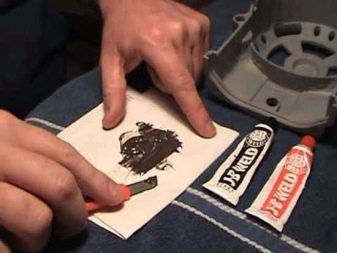Cold welding for metal: the pros and cons
Modern glue with a high level of durability is necessary for many jobs in various industries. Such material is cold welding. The products have found their application in the field of repair of vehicles and sanitary ware, elimination of various defects of metal surfaces and restoration of the thread.
Special features
The composition can be used in any area where conventional welding is effective for metal, but a number of objective reasons hinder the work of the latter. Such a method of joining metal surfaces consists in combining elements with the help of plasticity of the welding mixture, which penetrates into the material.
Another feature of cold welding is the fact that to ensure productive work there is no need to purchase specialized expensive equipment.This method can be attributed to pressure welding, but the spike is obtained due to deep plastic deformation, which destroys the oxide layer of the material, which makes the distance between the elements similar to the lattice parameters. It is an increase in the energy level of substances that favors the creation of a strong chemical bond.
The properties of this material make it possible to work with surfaces and structures made of non-ferrous and ferrous metals. The main feature of this method of bonding is the fact that cold welding is an ideal option for the repair of metal products that are sensitive to heat, and provides a reliable connection between different metals.
The method has several advantages.
- Products available to consumers, sold in many supermarkets.
- In most cases it is possible to connect elements without first dismantling them.
- Work does not take much time.
- Bonding surfaces do not deform, because they are not exposed to high temperatures.
- The welding seam meets the requirements of aesthetic appeal.
- Often this method is the only way to connect parts. This applies to welding elements made of copper and aluminum, as well as containers that contain explosive substances.
- The technology eliminates waste.
- There is no need to exert maximum effort to carry out the process of joining parts.
- The material is absolutely harmless.
- For the work does not need special skills and special tools.
- There are heat-resistant varieties of the composition, with which you can work at temperatures above +1000 C.
The disadvantages of the material include several features.
- The strength of the weld is still less than that of conventional welding, so products are not always suitable for use on an industrial scale.
- Cold welding is not positioned as a material for sealing up large defects.
- Surfaces that need to be connected need to be thoroughly cleaned before applying the composition. Otherwise, the quality of the clutch decreases sharply.
Kinds
Based on the location of the joint and the type of working surfaces, several types of cold welds can be distinguished.
- Dot - recommended for tires and kitchen utensils made of aluminum and copper, mounting attachments on aluminum wires, thereby increasing the quality of the connection of electrical contacts;
- Suture - intended for the production of cases of various devices and equipment, as well as bulk sealed containers;
- Butt joint - used for the manufacture of rings and wire connections;
- Tavrovaya - used for gluing brass studs, busbars of electric locomotives;
- Shear welding - it is intended for the pipes providing water supply, including heating systems, and also for transmission lines on the railway.
Depending on the adhesive composition and its thickness, welding is classified as follows:
- Plasticine, resembling a bar, having one or two layers (the technology of using such a material requires preliminary mixing and softening of the product);
- Liquid, consisting of glue and hardener, which must be mixed before applying (therefore, it is called two-component).
Regarding the target orientation there are several types of cold welding.
- Waterproof composition designed to work in the water.
- A vehicle repair product that includes a metal filler. This welding is produced specifically for work with automotive parts.
- A product intended for working with metals, having in its composition a certain filler, due to which almost all types of surfaces are connected to each other.
- Welding universal purpose. It provides a reliable connection of different materials (wood, various polymers, etc.). This product is the most sought after in the market.
- High temperature cold welding. It can be used at temperatures from +1500 to -60 C.
Specifications
Cold welding is a plastic glue produced on the basis of epoxy resin. The two-component composition is stored for a long time without losing its basic properties. Single-component products require prompt application, since they quickly lose their connecting qualities.
Most often, the tool is produced in the form of a two-layer cylinder. Its shell is a hardener with resin and metal dust inside. This additive provides a strong connection.
In addition to the main components, welding also includes other additives, such as sulfur. Additives provide unique compositional quality characteristics. Manufacturers, as a rule, do not disclose the entire list of substances used.
The main components that are present in most cold metal welds are as follows:
- epoxy resin - the main element (provides the binding of materials to each other);
- a filler, which is a metal dust (responsible for the strength of the whole bundle, making the seam heat-resistant);
- various additives, the composition of which is formed by the manufacturer depending on the type of welding.
The temperature characteristics of cold welding also depend on the composition of the product. Usually the instruction to the product contains information about the parameters, under which the connection will be reliable and durable. For most of the compositions, the maximum is equal to +260 C.
Manufacturers
In the domestic market, the most popular manufacturers are foreign companies, since Russian products are of lower quality, as evidenced by numerous consumer reviews.Domestic products are represented by trademarks. "Diamond" or "Polimet", Henkel. Leaders among foreign teams are considered Hi-Gear, Abro, Poxipol.
Abro steel - American two-component welding for universal use. The material withstands the effects of various aggressive substances and perfectly retains its properties up to a temperature of +260 C.
Hi-Gear "Fast Steel" it is made for works with metal, plastic and a stone. Products provide a strong connection, resistant to mechanical and chemical effects.
Henkel "Moment SuperEpoxy" Widely used for joining alloys from metal and other materials. The composition retains its properties up to a temperature of +140 C.
Uruguayan Adefal Trading S. A. Poxipol - universal two-component cold welding. The maximum temperature for such products is +120 C.
Germanic Wurth Liuguid Metal Fe 1 produced to work with ceramic and metal parts and structures. The material does not burn and does not contain solvents. The composition of welding provides its resistance to aggressive substances. The maximum temperature for such products is +120 C.
Cold welding for batteries and water pipes Mastix it is better than all other compounds to cope with the task of sealing cracks and other defects on similar structures. The temperature in the pipelines does not exceed the permissible component of +120 C, so products can be used at home. This welding allows you to create lost parts and new parts.
Metal silicate products Kerry "Thermo" has a high viscosity. It has proven itself in working with heat-resistant alloys of steel, cast iron and titanium. The composition is resistant to mechanical stress, therefore, recommended for the repair of automotive parts. The product withstands temperature drops from +900 to -60 C.
Tips
To properly apply the composition, you must perform a number of preparatory procedures. First of all, you need to remove from the surface dust, grease, oil stains and other contaminants. This also applies to rust; it is thoroughly cleaned to provide access to adhereable surfaces. Only after the coating is suitable for work, you should start welding.
Two-component formulations are removed from the packaging and thoroughly mixed. Liquid and solid compositions must come to a state of plasticity, due to which they can be given a different shape. Works are carried out only with the observance of safety measures - it is necessary to eliminate the risk of products falling on the skin.
As soon as the composition acquires an acceptable consistency, it must immediately be used for its intended purpose, since the material dries quickly.
It is recommended to control the thickness of the applied material. The first layer should not exceed 6 mm. If necessary, a second layer of cold welding is applied, but only after the previous one has completely dried out. It will be possible to exploit the structure for its intended purpose when the composition is completely hardened.
Many buyers are wondering which cold weld is better. The answer to this question is difficult to give, since the technical characteristics of the composition are selected individually, taking into account a number of important nuances that relate to the type of metal surfaces, operating conditions and many other fundamentally significant factors.
The only recommendation is to wish to give preference to well-known brands,whose products have positive feedback. However, in this case, the cost of production will be quite high.
There are several points to consider when buying cold welding.
- The presence of additives in the composition and their variety. The filler must correspond to the type of metal that will be glued together with the help of the composition, or must have a strength not lower than that of this material.
- Indicators of the minimum and maximum temperature, in the range of which the composition retains its technical indicators. High-temperature compounds are much stronger.
- Often of fundamental importance is the hardening time of welding. Therefore, it will be more correct to purchase two types of product: for operational gluing and standard type. Although in most cases the latter type provides a more reliable and high-quality connection.
Undoubtedly, there are some drawbacks to the products, but with the proper selection of material, you can easily cope with the problems that have arisen, even if the user's professional experience is minimal.
How the cold welding works, see the following video.
